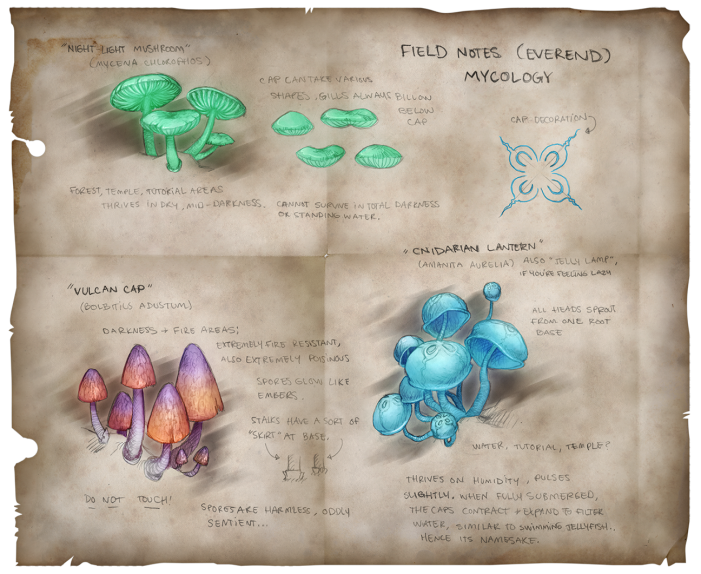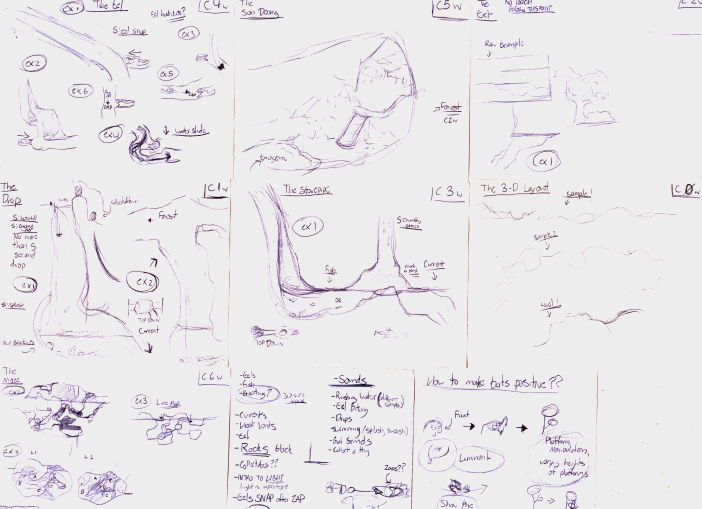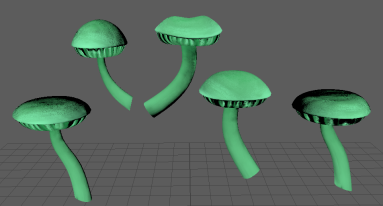So, we ran into a problem here, folks! We loooooove sharing with you guys, but we also hate spoilers. So while we have been quite busy, there is very little to show you without revealing some pretty major aspects of the game. Don’t worry, by our next sprint in two weeks, we will have lots to show you, including some great art and gameplay videos. But in the meantime, we are going to explain what our art people actually do all day. (aside from eating and shooting each other with nerf guns). Our team artists all tend to have specific things they focus on, like I focus on almost entirely 2D work like graphic design and texture art, but we float between other tasks that need to be done as well. What tasks you say? Well let me tell you!
The Pipeline:
All of these next positions are part of something called “The pipeline”, which is all the steps it takes to smoothly make art assets as a team from beginning to end. The pipeline is what keeps our team moving forward in art production like a well oiled machine c:
Concept Art:
Concept art is how every piece of game art is born. One of our concept artists will take the idea for an asset or character, and sketch out ideas for what it can look like, refining it until we have a final piece of art that will be used as reference for making the object.

3D Modeling:
This is the core of the art we need for Everend, it is making the actual 3D meshes to place in the game. We use Maya for the bulk of the work, and will also go into zbrush as well, if an object needs a lot of detail. The person that does the 3D modeling will make the mesh, which is the polygons that make the object, and then they UV the object. The UV is all the polygons stretched out to lay flat, like a sewing pattern, to be painted on to make our textures. Sometimes the artist will paint their own textures when they are done UV’ing, but they also will sometimes send them to another artist to do the texture work!

Texturing:
This is where the color, texture, glow, and other qualities aside from its shape are created. The artist will paint different ‘maps’ fitting the UV’s of the object, which will each add different features to the object. Every object needs color, which is the ‘texture’, and then from there the objects really begin to vary. Some have normal maps, which add bumps and added small detail, or glow that makes certain areas look illuminated, or maps that add shine and other fancy details.
Here is an example of some objects with all their textures applied!
Particles (in some cases):
So pretty! Particles are the glitter, sparkle, and pixie dust of the level. They aren’t large physical 3D objects, but animated effects to add detail and character to the game. The particle artist (me) will make the textures and come up with sketches for what the particles will look like, and then work with the programmer in charge of particles (Gabe), to find out the best way to achieve that effect in game.

Rigging and Animating (for characters):
As you have already seen in Alex’s post, rigging is building the skeleton for moving the models for characters in the game. Once you have the skeleton, the character is posed and keyframed into the animations we need for the game. You can read all about this on our rigger/animator Alex’s post, where he explains the whole process!

Other Art Roles:
Outside of the pipeline, there is still a lot of other art to be made!
Graphic Design/PR/UI:
Graphic Design and UI art is used in the game for menus, buttons, icons, and other 2D pieces of art that are used to help communicate things to the player. Outside of the game, this artist also creates the business cards, pamphlets, websites, presentations, press materials, and all sorts of other printed materials that can be used to help promote and present the game.

Level Design:
This art isn’t anything you will see directly in Everend, but is vital in designing our game. Level design art is technical drawings that show the layout of different areas, how different puzzles will look and operate, and help concept how different levels can be arranged for the best play experience. Because this art is used to brainstorm ideas for level design, our programmers will also sketch out level design art as well! Level design art is mostly rough sketches and scribbles, but there are some nicer polished pieces we use for presentations and pitching our game.

Thanks for reading, and I hope to see you back next week, when we talk about the different roles on our programming team!
-Megan








